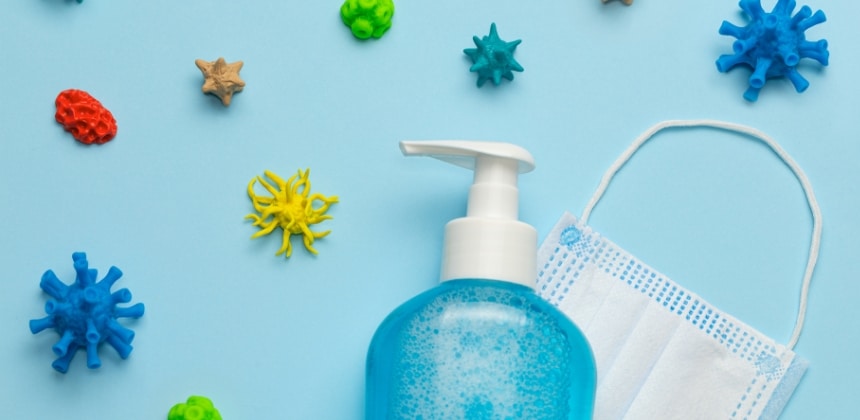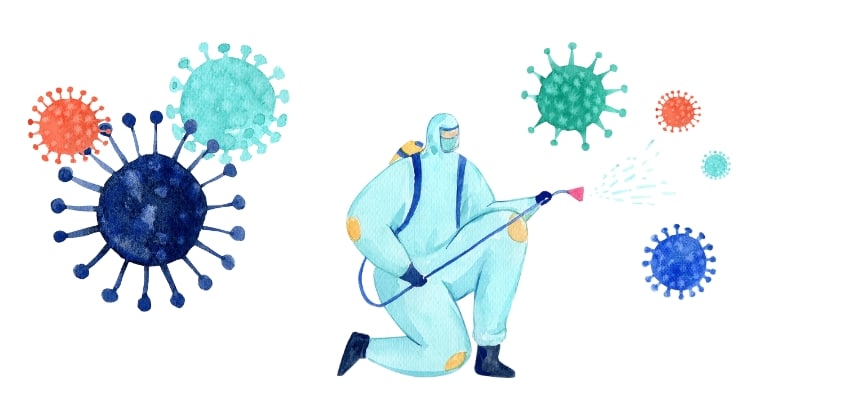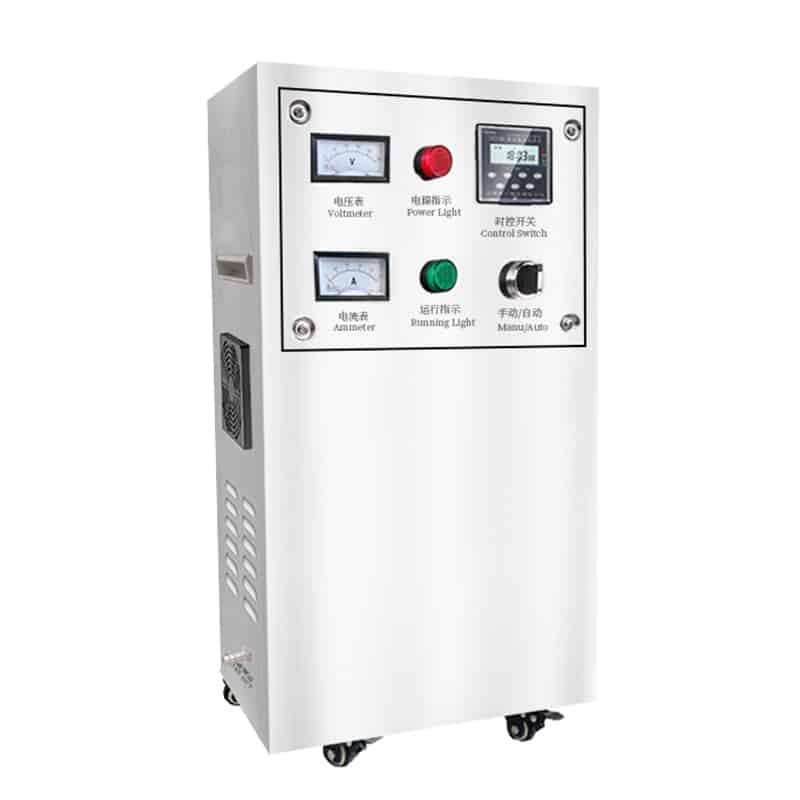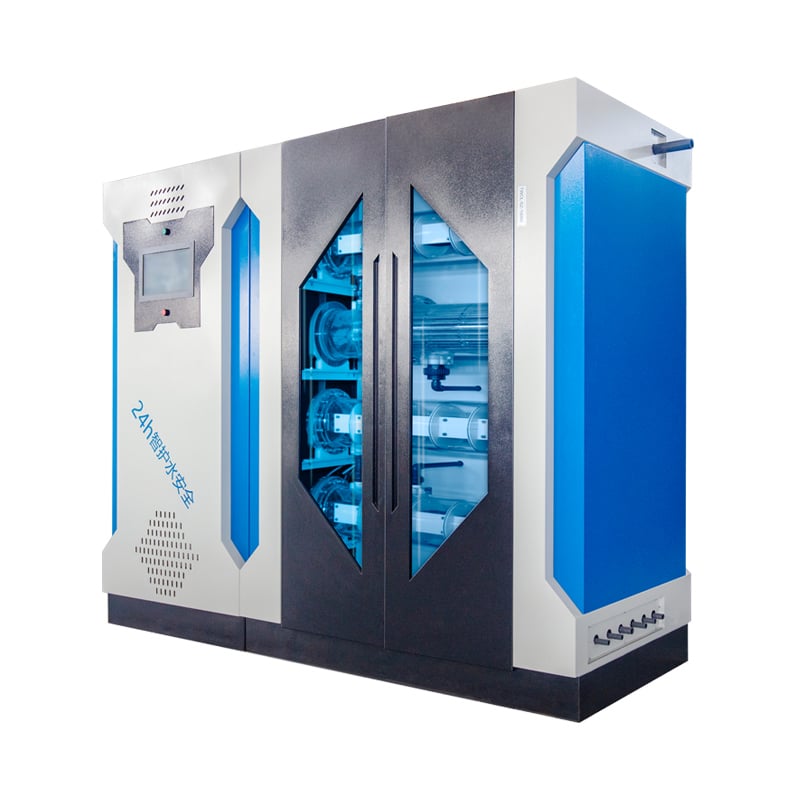The terms sanitization and disinfection come up frequently in everyday life, especially in the context of maintaining hygiene and preventing the spread of germs. Despite their seeming similarity, the two processes serve different purposes and levels of cleanliness. Understanding their differences is essential to choosing the right method for your actual needs.
What is Sanitization?
What are the Criteria for Sanitization?

The standard for sanitization is based primarily on the reduction of bacterial populations to a recognized safe level, and this standard is usually set by the public health department or the relevant industry. Specifically, the effectiveness and standard of sanitization can be measured in the following ways:
- Percentage of pathogen population reduction
Sanitization is usually required to reduce bacteria by at least 99.9% (3 log reduction). This means that the original bacterial population can be reduced by a factor of 1000 after sanitization. - Applicable pathogen types
The criteria for sanitization are usually specific to a particular pathogen, such as a particular bacterium. Different germicidal products may have different efficacy against different pathogens, therefore, the scope of application needs to be noted when selecting and using germicidal products. - Contact time
Different biocidal products and methods may require different contact times to achieve effective biocidal effects. For example, some surface cleaners may need to be left wet for several minutes to achieve a standard germicidal effect. - Environment of use
Environmental factors, such as temperature, pH, and the presence of organic matter, may affect germicidal effectiveness. For example, the effectiveness of some biocides may be reduced in the presence of organic matter such as blood or body fluids. - Public health standards
Public health agencies may set specific biocidal standards based on different application environments and needs. For example, biocide standards may differ between the food processing industry and healthcare because of the different sanitation requirements and potential risks to the environment. - Regulatory requirements
Regulatory agencies in different countries or regions may have different sanitization standards and regulations. For example, the U.S. Environmental Protection Agency (EPA) and the CE marking in Europe have standards and certifications for sanitizers and biocides.
Ideal for sanitizing occasions:
- Wiping down kitchen counters after food preparation.
- Cleaning children’s toys or classroom tables.
- Wash in the dishwasher with germicidal properties.
What is Disinfection?
What are the Criteria for Disinfection?

Disinfection is based on more stringent standards than sanitization and is designed to kill almost all harmful microorganisms (including bacteria, viruses and fungi). The following are the criteria for disinfection and the basis of measurement:
- Percentage of microorganisms eliminated
Disinfection usually requires the elimination of 99.999% (5 log reduction) of harmful microorganisms. This means that the number of microorganisms originally present is reduced 100,000-fold after disinfection, which is close to total elimination. - Applicable microbial range
Disinfection must be effective against a wide range of pathogens, including bacteria, viruses, fungi and other microorganisms. Compared to sanitization, disinfection targets more types of pathogens than just bacteria.
Highly effective disinfectants: can kill bacteria (e.g. Mycobacterium tuberculosis), viruses (e.g. HIV, HBV), and fungi (e.g. Candida albicans).
Moderately effective disinfectants: kill most bacteria, some viruses and fungi.
Low-acting disinfectants: kill only certain bacteria and viruses and are ineffective against hardy pathogens such as tuberculosis bacteria and spores.
- Contact time
Standards for disinfection usually require that the product remain in contact with the surface for a certain amount of time in order to achieve the desired disinfection effect. This time is generally 3-10 minutes, depending on the product and the target microorganism. - Concentration of use
Disinfectants must be used at a specified concentration to achieve the desired effect. For example, some disinfectants can kill more pathogens at higher concentrations, while at lower concentrations they may have only a bactericidal effect. The concentration at which disinfection is effective is usually determined by the product specification or by the regulatory agency. - Environmental factors
Disinfection standards also depend on environmental conditions. Temperature, humidity, and the presence of organic matter (e.g., blood, body fluids) can affect disinfection effectiveness. For example, certain disinfectants may not be effective in the presence of blood, so disinfectants used in healthcare environments usually have higher requirements. - Industry standards and regulations
Different industries and countries will have appropriate disinfection standards, for example:
Medical industry: Stricter disinfection standards must be followed, usually set by health agencies or international organizations, such as the World Health Organization (WHO) or the U.S. Centers for Disease Control and Prevention (CDC).
Food processing industry: Standards for disinfection are set by health authorities or Food and Drug Administration (FDA), etc. to ensure that equipment and surfaces are safe and hygienic. - Disinfection categories
High level disinfection: Capable of inactivating all microorganisms, including viruses, bacteria and spores (except for a few highly resistant bacterial spores).
Medium level disinfection: Kills most viruses, bacteria and fungi, but may not be able to combat spores.
Low level disinfection: Targets some common bacteria and viruses, but has limited effectiveness against hardy pathogens.
Suitable for disinfecting occasions:
- Cleaning surfaces in hospitals or clinics.
- Disinfect bathroom sinks and toilets.
- Wipe down door handles or switches in public areas.
How to Choose Between Sanitization and Disinfection in the Water Treatment Industry?
- Uses of water
Drinking water: Sanitization is essential because it is necessary to ensure that all harmful micro-organisms (e.g. bacteria, viruses and parasites) are completely killed to guarantee safe drinking water.
Industrial water: If the water is mainly used in cooling systems or manufacturing processes, sanitization is usually sufficient, as the main focus is on controlling bacteria rather than completely killing all microorganisms.
Wastewater treatment: Depending on the discharge requirements of the wastewater and the use of the treated water, the choice of sanitization or disinfection is made. If it is for agricultural irrigation or other low-risk uses, sanitization may be sufficient; however, if the wastewater is reused in a high-risk environment, disinfection is a more reliable option. - Types of microorganisms in the water
Bacterial contamination is predominant: If the microorganisms in the water are predominantly bacterial, sanitization can be effective in reducing the bacterial population to a safe level and is suitable for general industrial water use or some low risk wastewater treatment.
With viruses or parasites: Disinfection is more suitable for removing harmful microorganisms such as viruses, fungi, parasites, etc., especially for high-risk water treatment scenarios such as drinking water, swimming pool water or hospital wastewater. - Treatment objectives
Control of bacterial reproduction: Sanitization is suitable for scenarios where the main objective is to control the bacterial population without complete elimination of all microorganisms. For example, bacterial control in cooling water or industrial circulating water to prevent clogging or corrosion of equipment caused by algae and bacterial blooms.
Complete killing of pathogens: Disinfection should be chosen if the goal is to ensure that the water is completely free of pathogens and to avoid the risk of pathogen transmission (e.g., in drinking water and water sources with high hygiene requirements). Disinfection removes a wider variety of microorganisms, including hardy viruses and parasites. - Water treatment methods
Sanitization methods:
Chlorination: Adding chlorine or chloride to water effectively kills most bacteria and is suitable for large-scale water treatment, but is less effective against certain viruses and parasites.
Ultraviolet sanitization: Through ultraviolet irradiation, it destroys the DNA of microorganisms and is widely used for sanitization of drinking water and industrial water. It does not add chemicals, but has limited effect on some microorganisms in the continuous water flow.
Disinfection methods:
Ozone disinfection: Ozone is a strong oxidizing agent that completely kills bacteria, viruses, fungi and parasites and is commonly used in drinking water and swimming pool water treatment. It has no residue, but the cost is higher.
Sodium hypochlorite disinfection: Commonly used in drinking water treatment and sewage disinfection, it can effectively destroy a variety of microorganisms, including bacteria and viruses.
Chlorine disinfection: Commonly used in municipal water systems to continuously maintain the sanitization effect in the water and prevent recontamination during delivery. - Regulatory requirements
Drinking water standards: Disinfection in drinking water treatment is a widely used standard worldwide because drinking water is required to meet specific sanitary standards, such as microbiological safety standards set by agencies such as the World Health Organization (WHO) or the U.S. Environmental Protection Agency (EPA).
Discharge standards: Disinfection is an important step in the wastewater treatment process to ensure that the effluent meets discharge standards. Sanitization may be sufficient if the wastewater is treated and reused for irrigation or industrial recycling, but disinfection may be required if the wastewater is discharged to a public water source or sensitive ecosystem.


- Cost and operation
Biocide: Relatively low cost and suitable for long-term use, especially in industrial water cycles. For scenarios where only bacterial growth needs to be controlled, biocides (e.g. chlorine) or UV equipment can operate effectively over the long term.
Disinfection: More costly but more thoroughly effective, especially in high-risk applications or in environments with high water quality requirements. Disinfection methods such as ozone and sodium hypochlorite require higher equipment and operating costs, but ensure the sanitary safety of water bodies.
Summary
In the water treatment industry, the choice of biocide or sanitize depends on the use of the water, the type of microorganisms targeted, the treatment objectives and the cost. Sanitization is typically used in industrial water, agricultural irrigation or wastewater treatment to target bacteria and is less expensive and suitable for scenarios where bacteria levels need to be controlled, such as industrial cooling water and irrigation water. Commonly used sanitization methods include chlorination and UV treatment. Disinfection, on the other hand, is more suitable for drinking water treatment, medical wastewater or water treatment in public places, where the goal is to completely kill bacteria, viruses, fungi and parasites. Common disinfection methods include ozone, sodium hypochlorite and chlorine disinfection, which, although more costly, ensure water safety, especially in high-risk applications. Sanitization is therefore suitable for general industrial applications, while disinfection is used in situations with higher hygiene requirements, such as drinking water and hospital wastewater.
If you are looking for reliable water treatment solutions, the KUOSI brand is your one-stop shop. We have advanced sludge dewaterers, sludge dryers, sludge conveyors, aeration blower, dosing systems, disinfection systems and other equipment to meet the water treatment needs in different scenarios. Whether it is industrial water treatment that requires sanitization or high standard drinking water treatment that requires disinfection, we have professional equipment and technical support to ensure that your system operates efficiently and your water quality is safe and up to standard. If you have any needs, please feel free to contact us, our expert team will customize the optimal solution for you.
